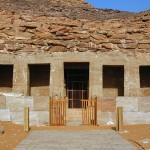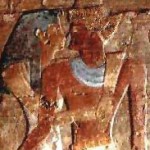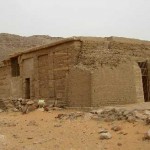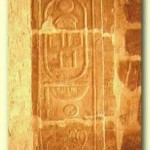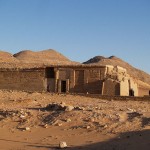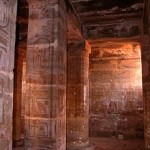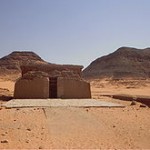The Temple of Amada, the oldest Egyptian temple in Nubia, was first constructed by pharaoh Thutmose III of the 18th dynasty and dedicated to Amun and Re-Horakhty. His son and successor, Amenhotep II continued the decoration program for this structure. Amenhotep II’s successor, Thutmose IV decided to place a roof over its forecourt and transform it into a pillared or hypostyle hall. During the Amarna period, Akhenaten had the name Amun destroyed throughout the temple but this was later restored by Seti I of Egypt’s 19th dynasty. Various 19th dynasty kings especially Seti I and Ramesses II also “carried out minor restorations and added to the temple’s decoration.” The stelas of the Viceroys of Kush Setau, Heqanakht and Messuy and that of Chancellor Bay describe their building activities under Ramesses II, Merneptah and Siptah respectively.
The original building plan for the structure featured a pylon, forecourt and a portico which led to a sanctuary. However, when Thutmose IV roofed the open forecourt, the pillars and walls “were decorated with offering scenes, with those involving Thutmosis IV on the left” and Thutmose III and Amenhotep II on the right.[2] Although the temple has a dull and crumbling exterior, its interior features enjoy some of the most finely cut reliefs with bright and vibrant colours.
The finest painted reliefs are in the innermost section of the temple where Thutmose III and Amenhotep II are shown being embraced or making offerings to various Egyptian gods. The left hand side of the vestibule shows Amenhotep II being crowned by Horus and Thoth and running with an oar and a hap (or navigational instrument). The cult room at the side of the sanctuary contains some interesting foundation and consecration scenes for the temple which depict “the ritual of the ‘stretching of the cord’, the ceremonial making and laying of bricks, and the offering of the temple to its gods.


